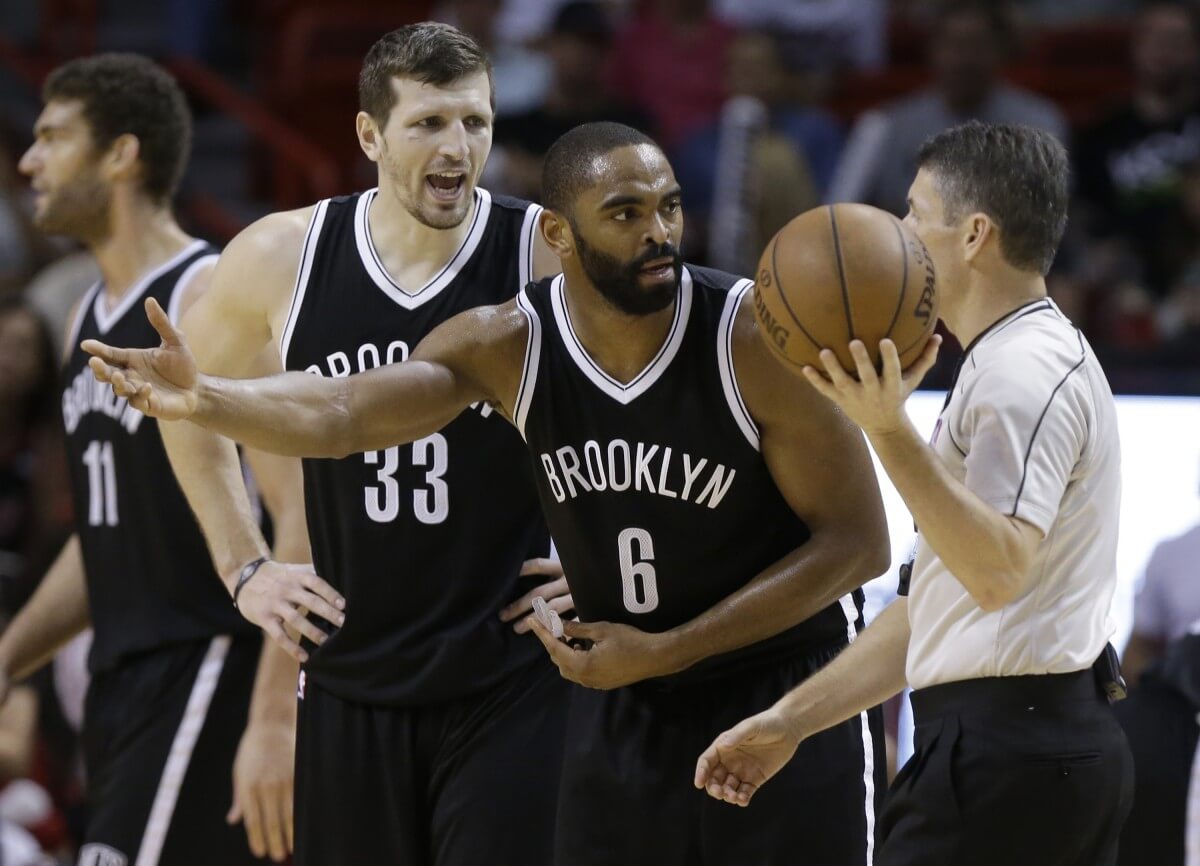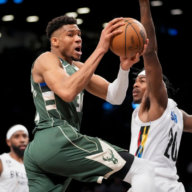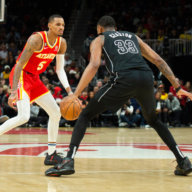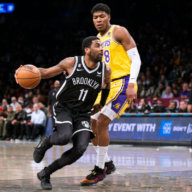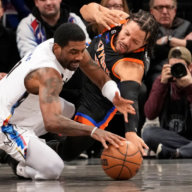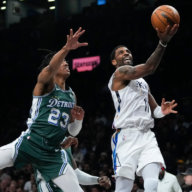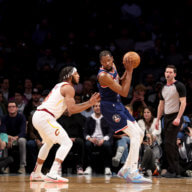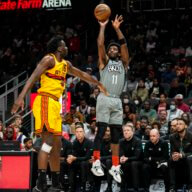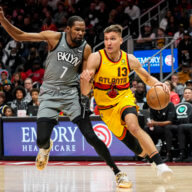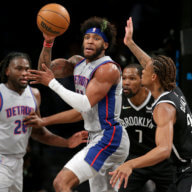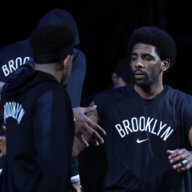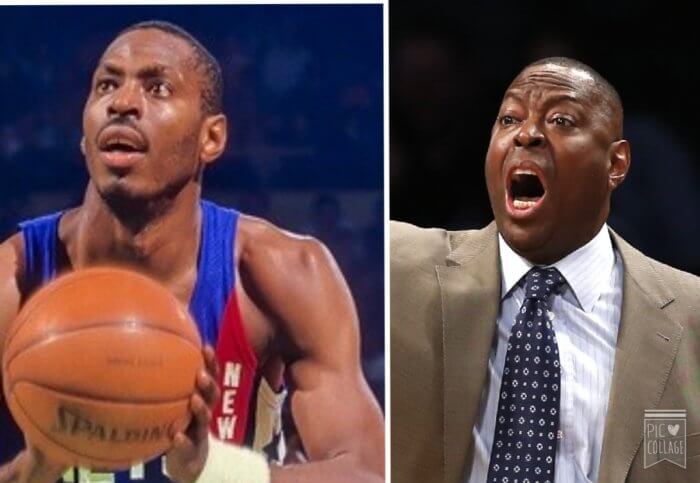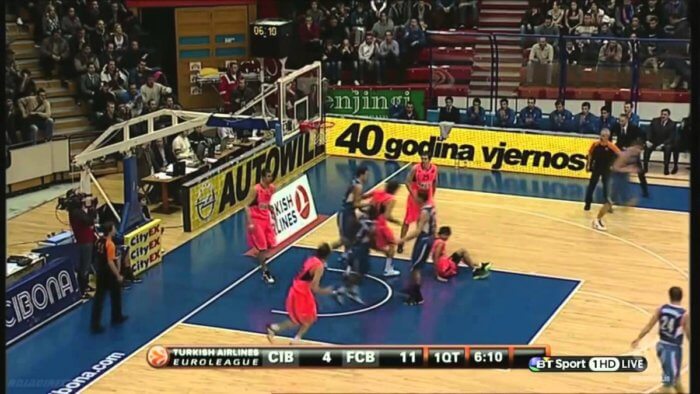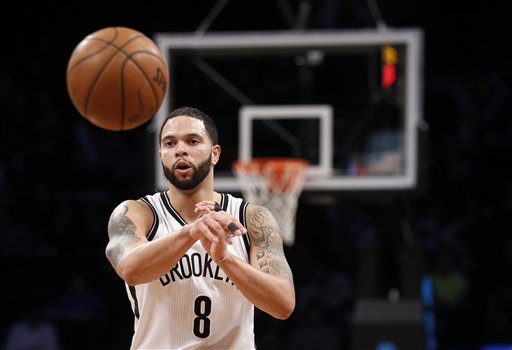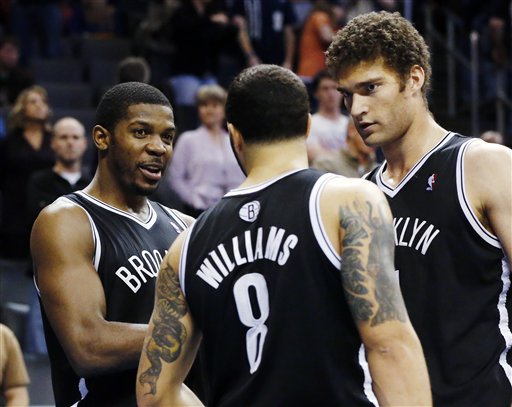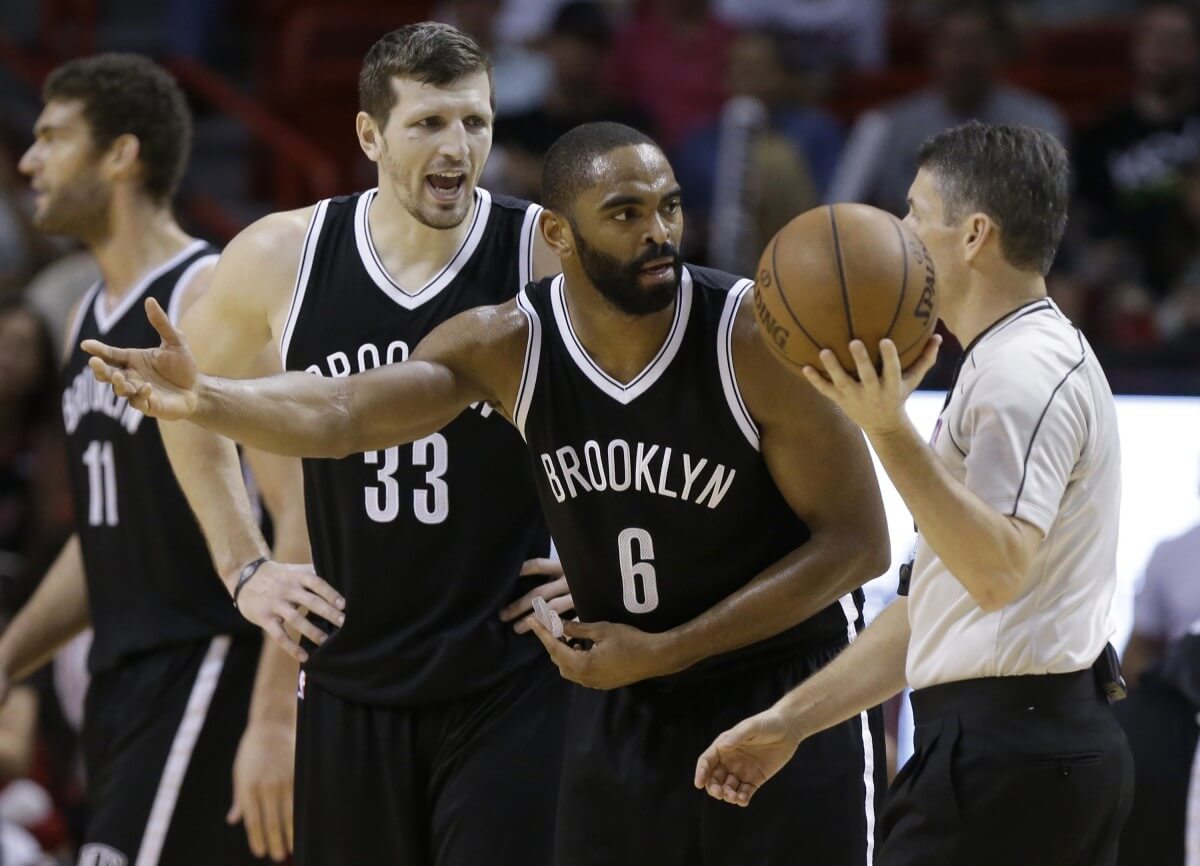
Two questions came to mind as the clock dwindled in the Nets’ loss in Miami on January 4th, extinguishing Brooklyn’s hopes of posting a seventh win in eight games.
First, why on earth were Mirza Teletovic and Alan Anderson still in the game with two minutes left in the fourth quarter, particularly given that Chris Bosh had exploited much of the evening to stage a dynamic scoring clinic video at the expense of Teletovic’s manifestly porous defense?
Second, why did Lionel Hollins keep Mason Plumlee and Sergey Karasev on the bench?
Letting Plumlee and Karasev finish the game wouldn’t have confused anyone. Both had registered productive minutes as starters during the winning streak. But Teletovic and Anderson as closers? The logic seemed elusive. Teletovic is a defense-deficient shooter who for weeks couldn’t hit the Brooklyn Burger kitchen from the Calexico cash register. Anderson, besides his theoretical ability to contain Dwyane Wade (an exercise that had proven thoroughly fruitless throughout the game), I struggled to identify a reasonable explanation for Hollins’ late-game trust.
Notwithstanding Hollins’ well-known aversion to analytics, I turned to data to help find an answer. The results surprised me. Six Nets lineups have played a minimum of 35 minutes together this season. The two lineups that have played together the most: (a) the starters from the beginning of the year (Deron Williams/Joe Johnson/Bojan Bogdanovic/Kevin Garnett/Brook Lopez – 179 minutes), and (b) the winning streak starters (Jack/Karasev/Johnson/Garnett/Plumlee – 107 minutes).
But neither of those combinations is actually the most statistically effective lineup. That distinction belongs to the ragtag crew of Williams, Johnson, Lopez and — sure enough — Anderson and Teletovic.
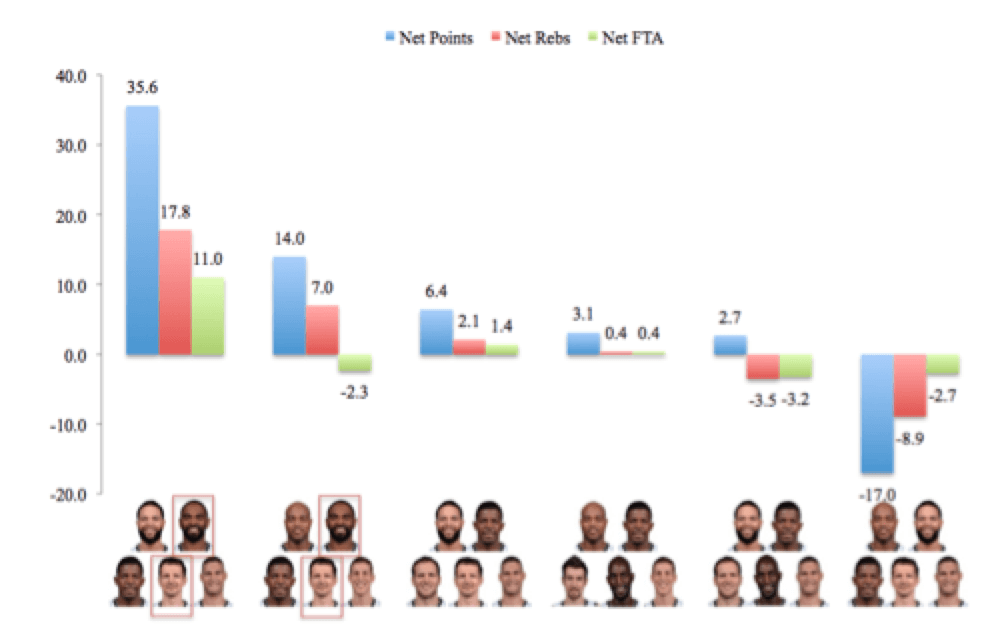
It’s not close. That group has outscored opponents by a staggering margin of 35.6 points per 48 minutes. Granted, they’ve played an aggregate of 35 minutes together, not an expansive sample size, and this lineup wouldn’t outscore an opponent by 20 or 30 points in a given 48-minute game.
The point is that they have appeared in eight distinct games together and have convincingly outperformed opponents across a multitude of game situations. Who knew that all those ostensibly exasperating Teletovic 35-footers, fading away with 15 seconds left on the shot-clock, actually serve some greater statistical good? (Not that I will stop screaming in protest at Teletovic’s shot selection.)
By contrast, the Williams/Jack lineup has flopped by any measure, statistical or visceral. That combination is the least effective group, getting pounded by a horrifying 17.0-point deficit per 48 minutes. The only difference between the Teletovic/Anderson super lineup and the Jack/Williams calamitous lineup is one player – Anderson vs. Jack – yet that single substitution gives rise to a massive disparity in production.
To be clear, this is not to diminish Jack’s value. He has admirably carried the team for entire stretches in Williams’ absence. Last night’s stunning romp over the Wizards serves as a case study in why the Nets shouldn’t dump Jack (much less Lopez) for junk. But in the specific context of a lineup alongside Williams, Johnson, Teletovic and Lopez, Anderson fits better than Jack.
The Teletovic/Anderson lineup has yielded other benefits too. They have out-rebounded opponents by 13 rebounds per 48 minutes — best of any lineup. They’ve gotten to the free throw line eight more times per 48 minutes than opponents — also, the best of any lineup. They’ve held opponents to 29.8% shooting — you guessed it, the best of any lineup. The stingy Opp. FG% defies expectation more than anything else, given Teletovic’s struggles to stay in front of the guy he’s guarding.
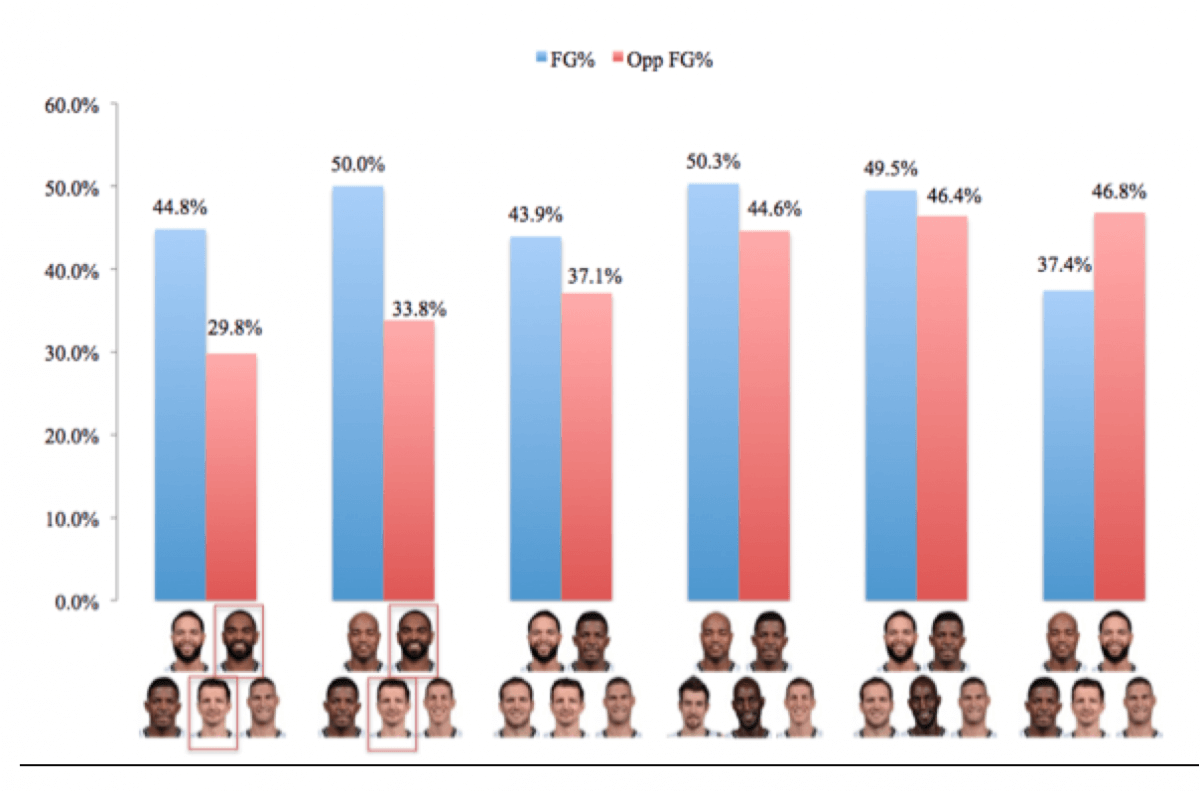
Luck undoubtedly played a role in these numbers. And at a moment when the Nets’ woes – in spite of the triumph over Washington – remain vast and endemic, it would be foolish to point to two marginal, limited players as hope for a transformative solution.
But at the very least, the Teletovic/Anderson lineup is worthy of cultivation and assessment, particularly in the listless lulls marked by rudderless offense, negligent rebounding and half-hearted defense, when the coaching staff is searching for a combination that might help stanch the bleeding.
It’s unfortunate that the Teletovic/Anderson combination won’t see any minutes alongside Williams in the near future, given his injury. In the meantime, it’s worth trying them with Jack. Indeed, the second most productive lineup (behind Williams with Teletovic/Anderson) is Jack with Teletovic/Anderson. That’s probably not a coincidence.
Time will tell if that group can continue to build on its success, and perhaps in the process vindicate the Teletovic/Anderson connection by uncovering its surprising statistical benefits.
Note: Data per basketball-reference.com, through 1.17.2015

